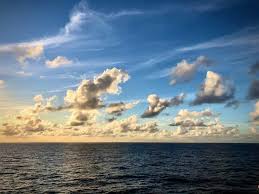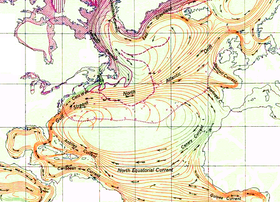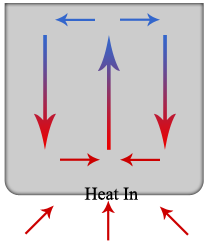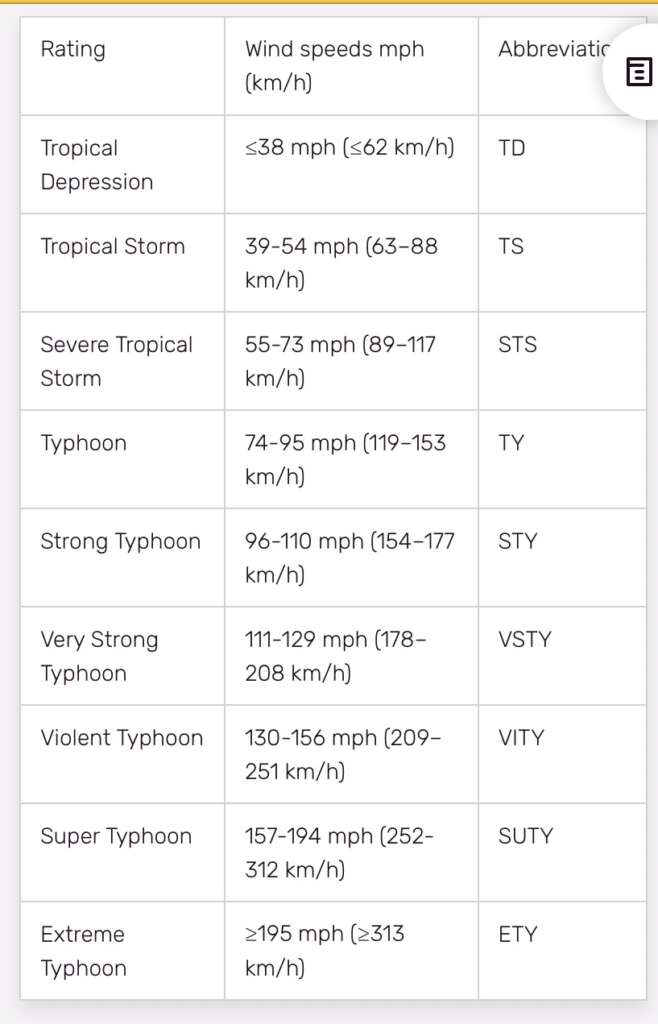Earlier this year I cancelled doing the Jester Challenge which is a solo race from Plymouth in the U.K. to Newport Rhode Island.
It starts from Plymouth on the 1st May 2022 unfortunately this year none of the contestants made it across the North Atlantic to America.
A number of the boats which are all below 32 feet or 9.75m many of them got damaged because of adverse weather conditions.
Crossing the Northern Atlantic in May is a tricky time because of westerly depressions crossing the Atlantic. From the eastern American sea board across the Atlantic to the UK. These depressions or low pressure systems create big sea and strong head winds which in a small sailing boat you have to contend with and negotiate.
I cancelled luckily because I didn’t think Stella Polaris was ready for such an undertaking. When a sailing boats get’s damage it can be rather expensive exercise to fix. I personally don’t have that sort of money and I don’t want to damage my boat intentionally.
Most sailors cross the Atlantic after the Hurricane season which ends at the end of November. They sail down to the canaries and on to Cape Verde islands off West Africa. Why so? From the Iberian peninsular you pick up the northerly trade winds and from slightly north of Cape Verde island you pick up the Easterly Trade winds that blow you across the North Atlantic Ocean about 15/ 20 degree’s above the equator.
What this means is you’re constantly running down wind as opposed to sailing into the wind on the more northerly Atlantic crossing. The temperature is much warmer giving a more relaxed overall sailing passage to the America’s .
You know when you’re in the trade wind belt due to the small cumulus clouds ☁️ that appear like steam train puffer clouds not that high above the horizon and they’re very distinctive. The old saying before fridges was you sail south until the butter melts.
Why cross the Atlantic to the Caribbean end of November? Because hurricanes 🌀 don’t form at that time of the year. Why? it’s due to the temperature of the water. What is a hurricane where did that name come from!

The word hurricane comes from the Taino Native American word hurucane, meaning evil spirit of the wind.
Hurricanes are cyclonic winds which is a system of winds rotating inwards to an area of low barometric pressure, with an anticlockwise (northern hemisphere) or clockwise (southern hemisphere) circulation; a depression.
Other parts of the world such as north west pacific and Indian Ocean they’re called Typhoons or a tropical cyclone or Cyclone.
I remember in 1970’s Darwin in northern Australia was flatten by a cyclone ( Tracey ) I had landed there when on route to New Zealand with the New Zealand Airforce for special Forces exercise called Gonfalon. Houses in Darwin were all built of wood so they were easily destroyed by high winds from a cyclone.
How and why do Cyclones or Hurricanes form?
Let’s look at the big picture of planet earth. The planet rotates on it axis every 24 hours and it rotates around the sun every 365 days.
In the northern hemisphere we have Gyre that rotates in an anti-clockwise direction. An ocean gyre is a large system of circular ocean currents formed by global wind patterns and forces created by Earth’s rotation.
The movement of the world’s major ocean gyres helps drive the “ocean conveyor belt.” The ocean conveyor belt circulates ocean water around the entire planet. Also known as thermohaline circulation, the ocean conveyor belt is essential for regulating temperature, salinity and nutrient flow throughout the ocean.

How a Gyre Forms
Three forces cause the circulation of a gyre: global wind patterns, Earth’s rotation, and Earth’s landmasses. Wind drags on the ocean surface, causing water to move in the direction the wind is blowing.
Earth’s rotation deflects, or changes the direction of, these wind-driven currents. This deflection is a part of the Coriolis effect. The Coriolis effect shifts surface currents by angles of about 45 degrees. In the Northern Hemisphere, ocean currents are deflected to the right, in a clockwise motion.
In the Southern Hemisphere, ocean currents are pushed to the left, in a counterclockwise motion.
Beneath surface currents of the gyre, the Coriolis effect results in what is called an Ekman spiral. While surface currents are deflected by about 45 degrees, each deeper layer in the water column is deflected slightly less. This results in a spiral pattern descending about 100 meters (330 feet).
Most of the world’s major gyres are subtropical gyres. These form between the polar and equatorial regions of Earth. Subtropical gyres circle areas beneath regions of high atmospheric pressure.
These are placid ocean areas thousands of kilometers in diameter. Unlike coastal zones, these central regions are relatively stable. The ocean water generally stays in one place while the currents of the gyre circulate around it.
The North Atlantic Gyre begins with the northward flow of the Gulf Stream along the East Coast of the United States. The Gulf Stream is the western boundary current of the gyre. The gyre then becomes the North Atlantic Current, which flows across the North Atlantic to Europe.
Still flowing in a circular pattern, the current flows south as far as the northwestern coast of Africa, where it is known as the Canary Current—the gyre’s eastern boundary current.
The gyre is completed as the North Atlantic Equatorial Current crosses the Atlantic Ocean to the Caribbean Sea. This entire circle and the water within it is the North Atlantic Gyre.
In fact the ocean gyres act a planetary heat exchanger moving hot water from the equator up to more northern latitudes to cool down. The same system works in the ocean of air which works in unison with the surface of liquid water below.
Convection Cell
Convection is the movement within a fluid that occurs when hotter, less dense material rises and colder, denser material sinks.
It’s one of the reasons for ocean currents, sea breezes, thunder clouds, and it’s why heaters are able to warm a house so quickly. A “convection cell” is an area within a fluid where warm material is rising in the center and cold material is sinking at the edges.
These cells occur at small scales within a pot of boiling water or in a cold room when the heat is turned on. But convection cells also occur at a massive scale in nature, in the case of wind and storms.
Atmospheric convection cells are simply when the process described above occurs in nature. Imagine, for example, a warm beach on a sunny morning.
The sand heats up and, eventually, the air above it. These molecules get hot, spread out, and rise. The colder, denser air above the ocean rushes in to fill the gap. Suddenly, an atmospheric convection cell is at play. Observers at the beach would probably refer to it as a “cool sea breeze,” but in reality, the motion is more circular.
Birds above the beach, for example, would feel the air beneath them rising. Above the ocean, the air is sinking. And at high altitudes, the air is not moving from the ocean toward the beach; the reverse is true. Warm air above the beach rises, cools off, and rushes back to fill in above the ocean.

Inside a convection cell, the changes are drastic. As the air at the base of the cell warms, the air molecules begin to move and vibrate. This causes them to collide with each other and spread out, lowering the density of the parcel of air.
And because warm air is able to hold more water, it also allows for more evaporation with the surrounding environment. This could raise the air’s relative humidity or simply keep the humidity constant since warm air is able to hold more water than cold air. But either way, the parcel of air typically gains more water molecules within it.
As the air rises, air pressure falls and the temperature drops. This natural tendency is referred to as the “atmospheric lapse rate.” And if you’ve observed snows atop tall mountains or ice on the windows of an airplane, you are at least vaguely familiar with it. In our atmosphere, the air temperature drops about 15 degrees Fahrenheit for every mile of altitude gained, and air pressure drops significantly as well.
The warm, moist rising air inevitably cools off. Because of this, the water molecules within the parcel of air begin to condense. They cling to various particles in the air (like dust) and grow larger as more and more water molecules cool off and stick together. When the droplets get cold enough, they freeze.
These tiny, white ice crystals are what we commonly refer to as clouds.
But here’s where it gets interesting. Because condensing water and freezing water actually release heat, the air that is left behind actually gets warmer. This air will then rise even more, leading to more condensation, more freezing, and releasing more heat.
What results is a positive feedback loop: warm, moist air rises; water condenses, releasing heat; the heat causes the air to rise even further. This loop is what leads to the spontaneous, and sometimes dangerous, creation of thunderclouds.
These towering clouds can reach heights of more than 30,000 feet. And eventually, the water droplets and ice crystals will grow large enough that they fall down, back through the clouds, and rain out. But of course, the feedback loop is not endless. The height of thunderclouds is limited by water content. As soon as the rising air runs out of moisture, the clouds will stop growing.
On a small, gentle scale, convection cells can cause a sea breeze by the ocean, the formation of fog in the mountains, or the growth of rain clouds.
On a more violent scale, they can cause thunderclouds or even tornadoes. (A tornado forms as air rapidly swirls in to fill the low-pressure gap left behind by a towering thundercloud’s formation).
On a slower scale, convection cells can also cause typhoons and hurricanes, as moist air rises in the tropics and then cools off, condensing and dumping water sometimes for hundreds of miles.
In fact, this process of convection (the motion within a fluid) and condensation (the clumping of water molecules as warm air rises) creates the vast majority of what we call weather. Wind, thunderstorms, tornadoes, hurricanes, and even snowstorms, are all the result of these same basic processes.
I know have been caught out in electric storms at sea when the ambient temperature is 30 degrees Celsius + firstly you get thunder clouds building, then electric lightening followed by strong winds and torrential rain. It’s natures heat exchanger cooling the ambient temperature down. Yes these strong winds and lightening and torrential rain certainly can be scary especially if you have too much canvas up?
But cyclones are larger form of natural energy transferring heat to cooler latitudes.

In the inertial frame of reference (upper part of the picture), the black ball moves in a straight line. However, the observer (red dot) who is standing in the rotating/non-inertial frame of reference (lower part of the picture) sees the object as following a curved path due to the Coriolis and centrifugal forces present in this frame.
The problem for mankind is we have heating planet that’s starting to change the atmospheric mechanics of the oceans and the atmosphere. We now have more powerful hurricanes with large dimensions. More heat energy both in the oceans and in the atmosphere means more energy more powerful hurricanes and weather systems.
They are so large and slow moving when they hit land they leave massive devastation and loss of life. We had two hurricanes Fiona which hit Puerto Rico and Ian yesterday that crossed central Florida. Wind ocean surge and heavy and sustained rain. These will certainly get worse as the planet slowly but surely gets hotter and hotter.
What we doing about it? Not a lot we carry on as usual. We have a war in Ukrainian causing energy problems what are we doing looking to Frack in the U.K. and try get more from fossil fuels from the North Sea. There doesn’t seem the political will to really attack the problem. King Charles was told not to go to the next COP meeting in Egypt, why? I ask myself?
